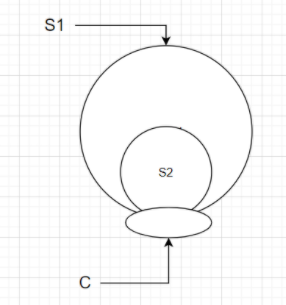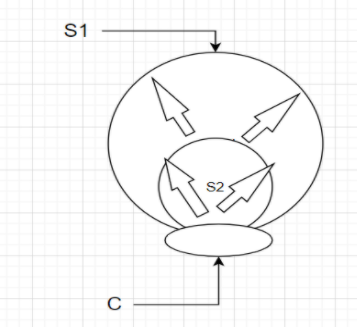Question
Question: Consider two surfaces \(S_1\) and \(S_2\) sharing the same open circular boundary as shown in the fi...
Consider two surfaces S1 and S2 sharing the same open circular boundary as shown in the figure. If θS1 and θS2are magnetic flux through these surfaces then,

(A) θS1>θS2
(B) θS2>θS1
(C) θS2=θS1
(D) θS1=θS2
Solution
Magnetic flux is the number of the magnetic field passing through a closed surface. The measurement of the magnetic field actually provides the total magnetic field that passes through a given surface area.
Complete step by step answer:

Case 1:
Since nothing is mentioned about the presence of any magnetic field producing element inside the surfaces, even if we consider C to be a closed boundary we know that that ϕ=∮B.dS but without the presence of any magnetic field producing element within the closed surface we get B=0 and hence the value of flux = 0
θS1=θS2=0
Case 2:
Now we consider that some flux is entering through the opening which is being shared by both the surfaces S1 and S2 we can notice that,
The flux that is passing through C and going through surface S2 will also pass through surface S1 so the flux passing through both surfaces is the same and equals net flux entering through their common circular boundary.
If we start from calculating the flux coming to S1 then also we can notice that whatever the amount of flux is coming to S1 that flux has come from nowhere else but the surface S2. So by this approach also we can conclude that net flux passing through both the surfaces will be equal.
θS1=θS2=0
Hence, the correct answer is option (D).
Note: In order to tackle such kinds of questions one should have understanding knowledge of the various terms involved and the application of Gauss's law. Students should have to practice a lot of numerical problems based on the application of Gauss law to master the concept behind the problems.
